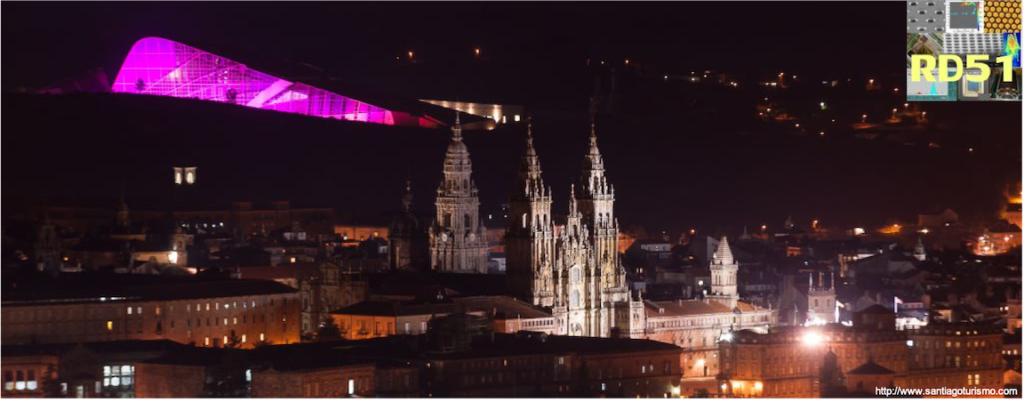During the week of October 5 to 9, IGFAE organized the yearly meeting of the RD51 collaboration, which this year quadrupled its attendance with 271 registered. The program included 40 technical contributing talks and another 34 review talks took place in the parallel workshop ‘New Horizons in TPCs’, organized by Paul Colas (Saclay-IRFU) and Diego González-Díaz (IGFAE). The organizing committee for the collaboration meeting was made up of other IGFAE researchers: José Benlliure, Dolores Cortina, Abraham Gallas, Juan Antonio Garzón Heydt, Ángela Saa-Hernández, Pablo Amedo and Marcos Seco.
Dedicated to the research and development of micropattern gas detectors (MPGD) – gaseous sensors that detect ionizing particles – the RD51 collaboration has been running since 2009 and encompasses about 450 people from 75 universities and research institutes in Europe, America, Asia and Africa. The talks covered the latest developments in micro-fabrication, resistive protection, conventional and optical amplification electronics, and characterization of new detection systems in basic and applied science, with a special focus on temporal projection cameras (TPC). Its inventor, David Nygren (currently at the University of Texas, Arlington), opened the parallel workshop, and it covered everything from the rudiments of technology to the most exciting developments, in many cases providing the necessary historical insight.
Overall, the workshop reflected the good health of the community in these difficult times and the ingenuity required to continue to thrive and establishes RD51 as a strong driving force in next-generation particle physics instrumentation. The contributions to the workshop were recorded and made available to the participants. The scientific articles, once reviewed, will be included in a special issue of the new journal Particles, from open access publisher MDPI.
This activity is co-funded by the Operative Program EFDR Galicia 2014-2020.
